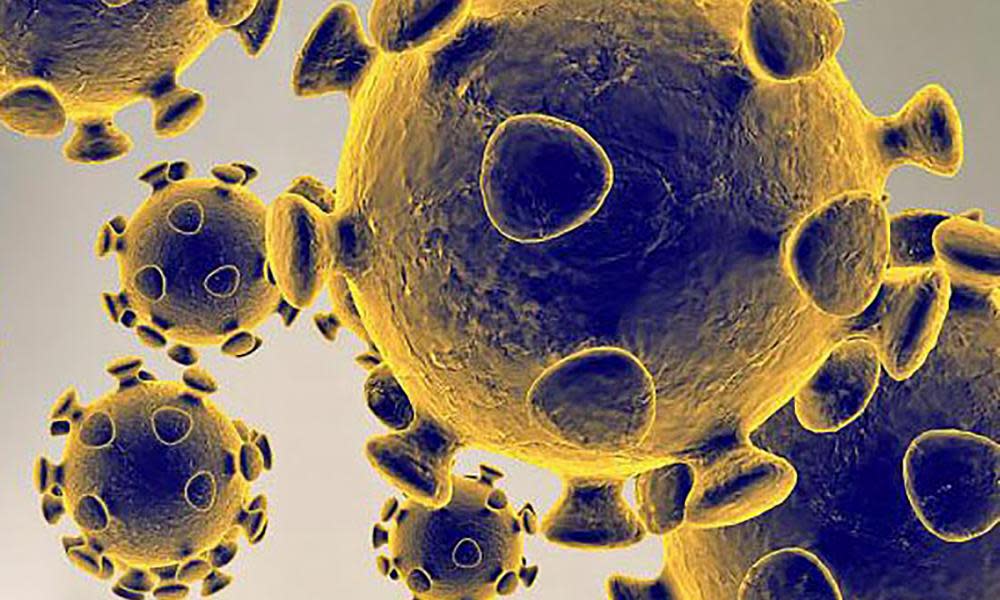UK lockdown must not be lifted until Covid-19 transmission is understood, say scientists

British scientists are racing to try to answer fundamental questions about the Covid-19 virus and its transmission before the lifting of the current national lockdown is approved by the government in the near future. Researchers say relaxing social distancing should occur only once it is understood why new infections of the disease are still being diagnosed in their thousands every day.
Such a rate means efforts to test and trace infected contacts – a key plank in the government’s anti-Covid strategy in coming months – would be quickly overwhelmed. Far more information is needed about the way the coronavirus is transmitted, they say. The new data will feed into the debate about the settings in which lockdown will be lifted first – for instance, whether it’s relatively safe to stage outdoor events.
And last week, several groups launched studies aimed at providing answers. These include projects to analyse how virus-laden aerosols behave in the air in a bid to understand how the disease is passed between humans. In addition, other schemes will target healthcare workers to investigate how the virus is being spread to them from patients and then on to others.
The importance of this latter approach was revealed in recent figures for cases of Covid-19 which have shown a drop in numbers of new cases in hospitals but reveal significant rises among health and social care workers.
This point was stressed by epidemiologist Anne Johnson at University College London. She said cutting transmissions of Covid-19 to health and social care workers had now emerged as a major priority. “Half of all new infections reported last week were among healthcare workers,” she told the Observer. “This has now become the leading edge of the spread of the disease.”
Lack of protective equipment and clothing may have worsened the situation, she added. “However, what is certain is that care workers are still at risk from their patients from whom they can pick up the virus and, in turn, pass it on to their colleagues, to their own families and possibly to other patients. We need to focus on limiting the spread of Covid-19 among health and social care workers as an absolute priority if we want to have a chance of bringing this epidemic to a halt.”
This view was backed by infectious diseases expert Tom Wingfield of the Liverpool School of Tropical Medicine. “The numbers show that the rate of decline of new cases is slower in the UK than other European countries and that is likely to be down to transmission occurring within health and social care settings, transmission in the community despite social distancing and, to a lesser extent, chains of transmission that are still occurring within households, especially in larger households or shared accommodation.”
Last week, researchers at Bristol University launched a major study aimed at finding out precisely how health workers are being infected by the Covid-19 virus. “We have taken a group of 130 health workers and we are going to test them intensively over the next three months,” said Professor Adam Finn, the leader of the project.
“We will take swabs from them twice a week, take blood samples regularly, and catalogue their symptoms – in the expectation that some of them will become infected. Then we will be able to find out when they became infected; how that relates to their symptoms at the time; and how it relates to their immune response. We are going to uncover details of the disease’s natural history because none of this information is known in detail. On the other hand, it is vitally important if we are to understand how this disease behaves.”
Finn said current modelling of the disease – although superb – was based on assumptions. “Essentially, the models are guesswork about the way the virus behaves. To get rid of the guesswork we need to supply evidence about how the virus actually behaves.”
A different approach is being taken by another Bristol University group, led by chemist, Professor Jonathan Reid. His team is studying the way the Covid-19 virus is passed from one person to another. This happens when fairly large droplets are coughed up or sneezed out by infected people. However, it is also possible viruses may be spread by much smaller aerosol particles – although it is unclear if they can carry enough virus to be infectious.
“It is clearly important to find out because aerosols can travel much further than heavier droplets,” said Reid. His team has just constructed a high-containment, automated laboratory containing a device in which clouds of virus-laden aerosol particles can be suspended while researchers alter temperature, humidity, ozone, levels of sunlight and other variables.
“In this way we can study how the virus’s infectivity changes,” added Reid. “That might tell us if it is affected by heat. If it is there might be some seasonality to this epidemic. We could also get a better idea of how to run air conditioning in hospitals, care homes and public spaces – in terms of temperature or humidity – in order to reduce the lifetime of the virus so that exposure to it is reduced.”

 Yahoo News
Yahoo News 
